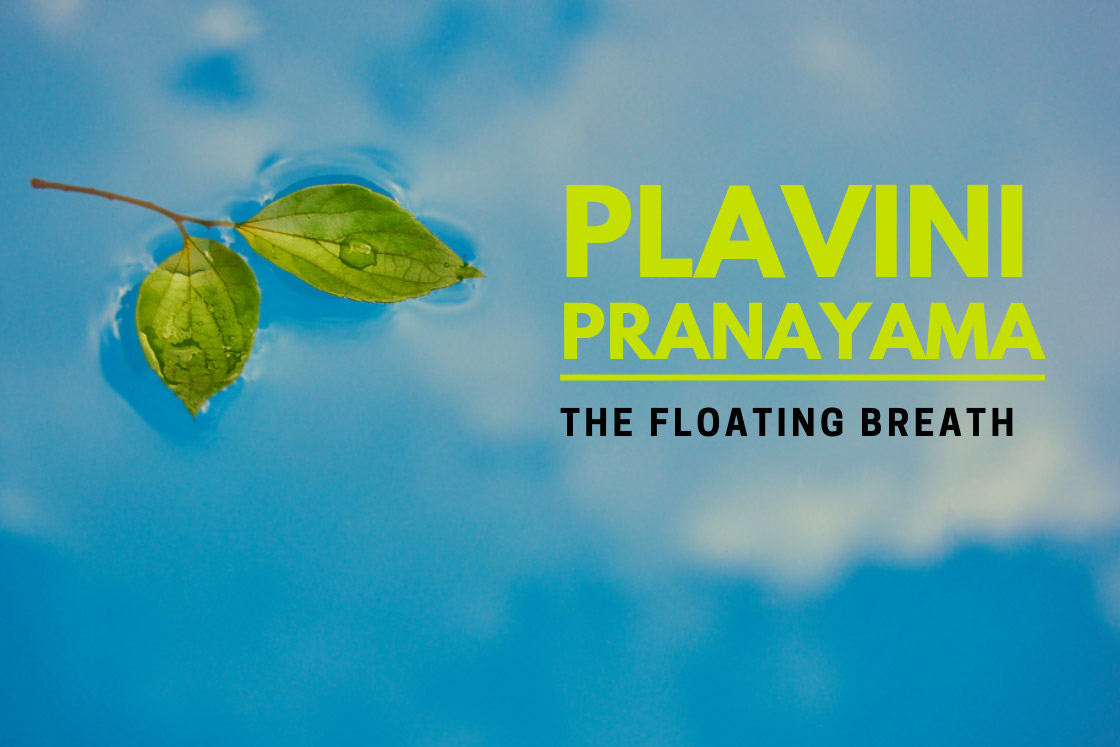
The way we treat our body and mind is the way they treat us. In order to get a pleasant response from our body, we first need to give the same level of affection to it.
The best way to show affection to your body is to give it the privilege of being free, the way it wants to be & experience the things that are not bound by our limited vision or understanding.
This privilege can be rightfully given by practicing ‘Plavini Pranayama’.
Now, you would ask, “what is quite different about this pranayama?” and this question is totally relatable as the richness and vastness of our natural science of Yoga is beyond measure.
What makes ‘Plavini’ different from other types of Pranayama is its simplicity along with attention it demands.
What is Plavini Pranayama?
Plavini Pranayama is a method to regulate the Prana (Life Force) in such a way that can make a practitioner’s body light enough to float on water like a leaf. As the body gets lighter by filling the air in the stomach like water, the gravitational effect remains undetected.
It’s an ancient technique of breath regulation, which is one among 8 Classical Pranayamas mentioned in Hatha Yoga Pradipika.
Actually, The Sanskrit term ‘Plavini’ is made up of root word ‘Plu’ which means ‘Cause to float or swim’. By adding Pranayama into it, Breath (air) becomes the cause of float & thus it’s called plavini pranayama.
The main idea behind working of Plavini is swallowing air like water (a fluid). Further, this fluid when enters into the body, helps the body to gain its natural shape and get the ability to levitate.
In this pranayama, the person consumes the air as one consumes water which makes the stomach a bit bloated & develops a feeling of being float over the water surface.
When air enters your stomach with your conscious effort, you have to make it stay there for as long as possible. In this stage, when the stomach is filled with air, a sound of peculiar tympanic (drumlike verberation of a cavity full of air) produced on tapping stomach.
How to Do Plavini Pranayama?

Beginners advised to perform plavini pranayama in meditative sitting postures to increase the breath-holding capacity of lungs initially. Further, after long practice, experienced one can perform it either in standing or laying down postures.
Some example of meditative sitting postures for plavini is Padmasana, Vajraasana, Sidhasana. When While to get the maximum benefits out of it, Shavasana considered the best practice to emulate it.
Steps to Perform Plavini in Sitting Pose [For Beginners]
Prepare yourself for plavini with the following steps.
- Start with positioning yourself either in Padmasana, Siddhasana or in Vajrasana. Make sure from your back, neck, and head aligned in one straight line and your awareness is focused at the middle of eyebrows to go deepen in the practice.
- In a while, relax your shoulder, abdomen muscles and let breathing expand and contract it freely. At this moment, watch your normal breathing to familiar with the frequency of breathing in and out.
Begin Plavini Pranayama with the following steps:
- Now take a deep breath in through nostrils and let it fills your lungs and abdomen consecutively. Expand your chest here to increase your inhalation limit. Remember to not put much pressure on your heart.
- After complete inhalation, make Jalandhar Bandha (Chin to chest lock) to hold the air inside your belly as per your capacity. Holding will let retained air fills into the intestine and thus resulting in inflated abdomen organs. (Further, these inflated organs increases the buoyancy of the body to float over water).
- Now release Jalandhar Bandha by bringing your head up and slowly expel the hold air from the abdomen through your nostrils.
This is one round of Plavini. Repeat in this manner for 5 times.
Steps to Perform Plavini Pranayama in Shavasana
The very first step before starting any form of activity is to choose an appropriate and comfortable environment.
- Take a mat and lay down on your back with your hands and foot resting at 45 degrees (Shavasana).
- Start breathing in and out in a very relaxing way without putting much pressure on your heart.
- Make your lips a little rounded and start swallowing breath from your mouth to the abdomen like you drinking the water. It will let your abdomen muscles go out and it looks like a balloon filled with air.
- Hold the air inside your stomach as long as possible. Retained air inside your stomach makes you lighter in weight and thus body buoyancy increases.
- Exhale all the air out, relax and wait till your navel chakra sends you a signal.
- Inhale, once you receive the signal.
This is 1 complete round of plavini. Repeat in this manner for 5 more times.
Benefits of Plavini Pranayama
One can experience following amazing benefits when mastering this technique of pranayama:
- In plavini, a person fills the abdomen with air. This air can make a person survive without water and food for several days.
- This pranayama improves the blood flow and helps the body to flush out the collected toxins.
- It’s a panacea for swimmers to float over water for a long time. Yogi Sivananda can float on water for twelve hours at a stretch on mastering the plavini pranayama.
- As plavini also called cleansing breathing, it removes impurities and toxins from our body by producing immense energy through retained air in the stomach.
- Plavini also helps a person to feel lighter as it smoothens the airflow and hence relaxes the brain cells.
- When breath gets hold on the stomach for a prolonged period, It helps in digestion and getting rid of constipation.
- Helps increase the energy levels of your body and adds a significant increase in your age.
Plavini Pranayama Precautions
- Make sure to not exceed the capacity of your breath-holding capacity. The capacity of holding breath varies from person to person and beginners should not push their limit.
- Practice plavini pranayama on an empty stomach or 5-6 hours after a meal.
- There shouldn’t have any obstruction while taking air through nostrils to the stomach.
- As it is a practice which needs good control on your breath, it is very important to be practiced under professional guidance.
Contraindications for Plavini Pranayama
Avoid doing plavini in following conditions:
- Persons having any heart problems and hypertension should not practice it, as it requires great attention of respiratory organs.
- In case of hernia and hydrocele, avoid doing it. Breath-holding can impose pressure on it.
- If you have any chronic disease or medical condition, do consult your doctor before practicing it.
Conclusion
In all, Pranayama is a great way to get control over your breath and thus on the flattering thoughts pattern of mind.
In the series of 8 ancient pranayamas, plavini is the easiest technique to feel physically and mentally light.
It is highly feasible as it can be done in the comfort of your home and requires the least space. The only tool required is air, which is provided by mother nature in abundance.





Really helpful article ? I’ll do it regularly